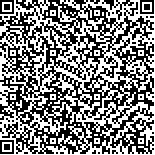| 引用本文: | 马攀,龚莉,张妮,王琳,唐学文,万帮喜,郑永乐,李浩,贾运涛.基于FDA不良事件数据库对洛匹那韦/利托那韦安全信号的检测与分析[J].中国现代应用药学,2020,37(4):406-413. |
| MA Pan,GONG Li,ZHANG Ni,WANG Lin,TANG Xuewen,WAN Bangxi,ZHENG Yongle,LI Hao,JIA Yuntao.Detection and Analysis of the Safety Signals of Lopinavir/Ritonavir Based on FDA Adverse Event Database[J].Chin J Mod Appl Pharm(中国现代应用药学),2020,37(4):406-413. |
|
| |
|
|
| 本文已被:浏览 4674次 下载 2252次 |

码上扫一扫! |
|
|
| 基于FDA不良事件数据库对洛匹那韦/利托那韦安全信号的检测与分析 |
|
马攀,龚莉,张妮,王琳,唐学文,万帮喜,郑永乐,李浩,贾运涛
|
|
1.重庆医科大学药学院, 重庆 400016;2.嘉兴太美医疗科技有限公司, 浙江 嘉兴 314031;3.重庆医科大学附属儿童医院药学部/儿童发育疾病研究教育部重点实验室/儿童发育重大疾病国家国际科技合作基地/儿科学重庆市重点实验室/国家儿童健康与疾病临床医学研究中心, 重庆 400014
|
|
| 摘要: |
| 目的 挖掘和评价新型冠状病毒肺炎(COVID-19)治疗方案中建议试用的抗病毒药"洛匹那韦/利托那韦"上市后的安全信号,为临床合理用药提供参考。方法 检索美国FDA不良事件报告系统(FDA adverse eventreporting system,FAERS)数据库2004年1月1日-2019年12月31日收录以"洛匹那韦/利托那韦"为首要怀疑对象的不良事件(Adversedrug events,ADEs)报告,采用报告比值比法和贝叶斯可信区间递进神经网络法检测该ADE信号,重点评估胃肠、肝肾、神经以及代谢等系统所涉及的安全信号。结果 纳入分析的11 170 959份ADEs报告中,以洛匹那韦/利托那韦为首要怀疑药物的ADEs报告共10 120份,发现该药不良反应信号累及多个系统,具有临床参考意义的高风险信号包括急性胰腺炎(ROR=4.32,IC-2SD=1.65)、细胞溶解性肝炎(ROR=20.90,IC-2SD=3.66)、高甘油三酯血症(ROR=27.80,IC-2SD=4.07)、脑室扩张(ROR=58.04,IC-2SD=4.26)、获得性脂肪营养不良(ROR=165.80,IC-2SD=6.10)等;另有高风险且说明书中未收录的安全信号包括呼吸急促(ROR=5.27,IC-2SD=1.79)、获得性范可尼综合征(ROR=122.34,IC-2SD=5.48)和线粒体毒性(ROR=225.12,IC-2SD=5.61),药物-不良事件组合的时间扫描图谱显示这3种安全信号与该药关联性较强。结论 基于FAERS不良事件信号检测显示,COVID-19疫情中使用洛匹那韦/利托那韦除密切关注该药的急性胰腺炎、肝功能不全、高甘油三酯血症、脑室扩张、获得性脂肪营养不良等不良事件外,也应注意可能的呼吸急促、获得性范可尼综合征、线粒体毒性等风险。 |
| 关键词: 新型冠状病毒肺炎 洛匹那韦/利托那韦 不良事件报告系统 药物安全 信号检测 |
| DOI:10.13748/j.cnki.issn1007-7693.2020.04.005 |
| 分类号:R969.3 |
| 基金项目:重庆市教委智慧医学-智慧药学(ZHYX2019022) |
|
| Detection and Analysis of the Safety Signals of Lopinavir/Ritonavir Based on FDA Adverse Event Database |
|
MA Pan1, GONG Li1, ZHANG Ni1, WANG Lin2, TANG Xuewen2, WAN Bangxi2, ZHENG Yongle2, LI Hao2, JIA Yuntao3,4,5,6,7
|
|
1.School of Pharmacy, Chongqing Medical University, Chongqing 400016, China;2.Jiaxing Taimei Medical Technology Co., Ltd, Jiaxing 314031, China;3.Department of Pharmacy, Children's Hospital of Chongqing Medical University;4.Ministry of Education Key Laboratory of Child Development and Disorders;5.China International Science and Technology Cooperation Base of Child Development and Critical Disorders;6.Chongqing Key Laboratory of Pediatrics;7.National Clinical Research Center for Child Health and Disorders, Chongqing 400014, China
|
| Abstract: |
| OBJECTIVE To mine and evaluate the postmarketing safety signals of lopinavir/ritonavir recommended for trial in the novel coronavirus pneumonia(COVID-19) treatment regimen, and to provide references for rational drug use in the clinic. METHODS The reporting odds ratio and Bayesian confidence interval progressive neural network(BCPNN) method were used to detect the risk signals from the data in the adverse event reporting system database(FAERS) of the US Food and Drug Administration(FDA) with lopinavir/ritonavir as the primary suspected object from January 1, 2004 to December 31, 2019. The safety signals of gastrointestinal, liver, kidney, nervous and metabolic systems were focused on. RESULTS Of the 11 170 959 ADEs reports in the analysis, 10 120 ADEs were reported with lopinavir/ritonavir as the primary suspected drug, which involved in multiple system. High risk signals of clinical significance included acute pancreatitis(ROR=4.32, IC-2SD=1.65), cytolytic hepatitis(ROR=20.90, IC-2SD=3.66), hypertriglyceridemia(ROR=27.80, IC-2SD=4.07), cerebral ventricular dilatation(ROR=58.04, IC-2SD=4.26), acquired adipose dystrophy(ROR=165.80, IC-2SD=6.10), and so on. Other high risk safety signals not included in the drug specification were tachypnoea(ROR=5.27, IC-2SD=1.79), acquired Fanconi syndrome(ROR=122.34, IC-2SD=5.48) and mitochondrial toxicity(ROR=225.12, IC-2SD=5.61). These three safety signals were further confirmed by the time scan map that showed a strong statistical association with lopinavir/ritonavir. CONCLUSION The FAERS-based detection of ADEs signals show that close attention should not only paid to these ADEs such as acute pancreatitis, cytolytic hepatitis, hypertriglyceridemia, ventricular dilatation, and acquired adipose dystrophy, but also to the risks such as possible tachypnoea, acquired Fanconi syndrome, and mitochondrial toxicity and so on if lopinavir/ritonavir was used in the treatment of COVID-19. |
| Key words: COVID-19 lopinavir/ritonavir adverse event reporting system drug safety signal detection |
|
|
|
|
